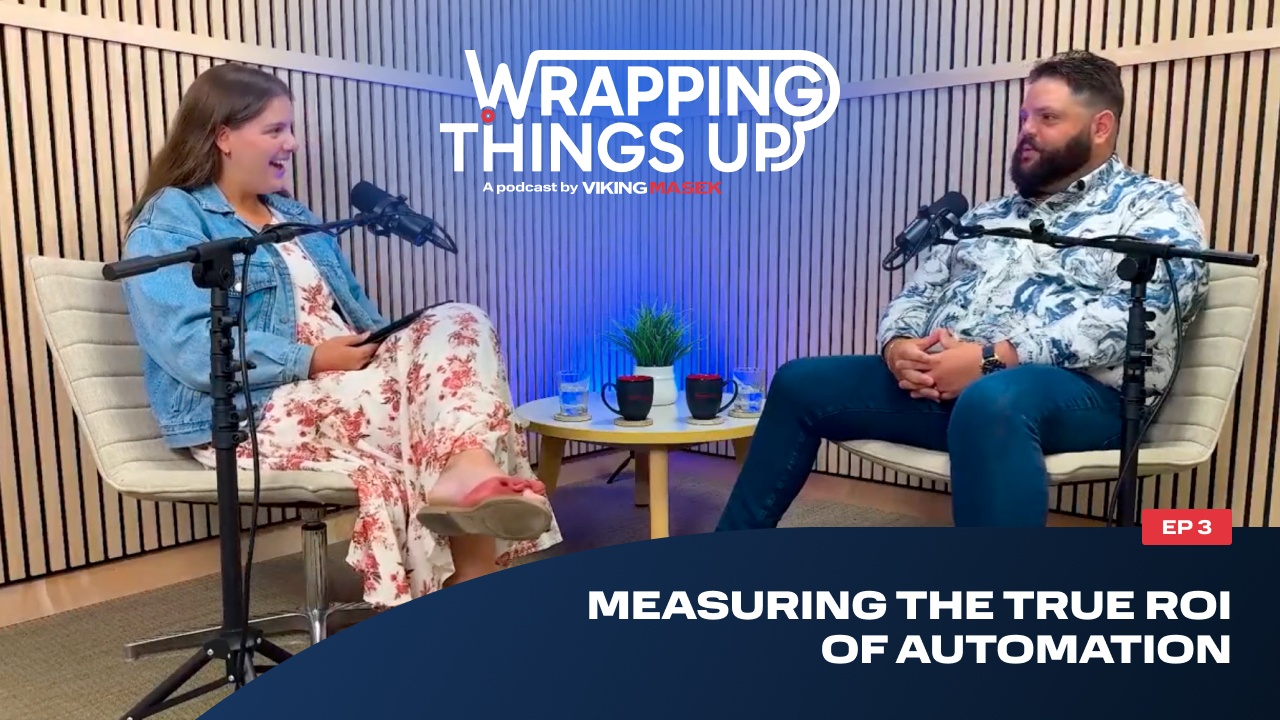How to Choose the Right Packaging Automation Partner
By Jordan Miller on July 28, 2025

When it comes to packaging automation, the stakes are high. A misstep in choosing a partner can cost far more than money — it can compromise timelines, erode trust with your customers, and create long-term operational headaches.
Whether you're an operations leader, plant manager, or engineer, this decision shapes the future of your production floor. That’s why it’s critical to look beyond equipment specs and focus on selecting a partner that will act as a value-driven extension of your team.
Here’s a practical checklist — based on decades of hands-on experience in the packaging world — to help you make an informed, confident partnership decision.
1. Industry Experience & Specialization
Not all packaging equipment suppliers are built the same. From sanitary design requirements in food and pharma to speed and flexibility needs in consumer goods, every industry presents unique challenges.
What to ask: “Can you share examples of work you’ve done with companies like ours?”
Red flag: A “we do it all” pitch without relevant case studies or proven outcomes.
Viking Masek has partnered with businesses across sectors — from craft coffee roasters to multinational nutraceutical manufacturers — tailoring every system to the unique pressures of that vertical.
2. System Integration Capabilities
An automation partner should do more than sell machinery: They should design solutions that fit seamlessly into your operation. That means understanding how to integrate packaging systems with upstream fillers, downstream case packers, conveyors, and even robotics.
Pro tip: Ask for past integration project overviews, including how the team handled third-party equipment and existing lines.
What to listen for: A clear plan for how different components will “talk” to each other.
3. Engineering Depth & Technical Support
Strong engineering talent is the backbone of any successful packaging automation project. A partner with an in-house team — mechanical, electrical, software — can better anticipate challenges and adapt solutions in real time.
Why it matters: Your packaging line isn’t static. As needs evolve, you’ll want experts who understand how to optimize for performance and scalability.
What to ask: “Do you outsource engineering or have a dedicated internal team?”
4. Project Management & Communication
Packaging projects have lots of moving parts. A reliable partner will bring structure and transparency to the process, from kickoff to installation to ramp-up.
Look for:
- Defined timelines
- Regular check-ins
- Visual planning tools (Gantt charts, dashboards)
- Clear ownership of change orders and decision points
A customer recently told us that our project manager felt “like part of our team” because of the proactive communication and accountability we brought to a multi-month line expansion. That kind of feedback is a reflection of process maturity.
5. After-Sales Support & Parts Availability
What happens after the line is running is just as important as the installation itself. Downtime is costly, and fast access to service and parts can make or break your ROI.
What to look for:
- Mean time to repair (MTTR) benchmarks
- Remote troubleshooting capability
- Spare parts in stock with short lead times
- Service roadmap beyond initial install
Red flag: Vague or absent support plans.
6. Scalability & Future-Proofing
Your business will grow, and your automation systems should grow with it. Look for modular designs that accommodate future expansion, and partners that stay current with emerging technologies like IIoT, machine learning, and predictive maintenance.
What to ask: “Can this line scale with our production volume or product formats?”
Choosing a future-ready partner ensures you won’t be boxed in by outdated technology five years down the line.
7. Total Cost of Ownership (TCO)
Don’t be lured by low sticker prices. True value lies in the total cost of ownership: the sum of maintenance, training, downtime, and system longevity.
Pro tip: Ask for a breakdown of TCO vs. initial investment. A slightly higher upfront cost may lead to a significantly lower lifetime cost — and fewer headaches.
8. Customer Testimonials & Case Studies
Stories from real customers are gold. Look for testimonials from companies in your industry, with similar operational scale and challenges.
What to look for:
- Specific outcomes (e.g., “reduced changeover time by 40%”)
- Named contacts or project details (when available)
- Relevance to your application or sector
Red flags:
- Generic praise without data or context
Additional Red Flags
Finally, as you conduct your search, be aware of other signs that a potential partner may not be as interested in your long-term success as it should be, or that they may not have the expertise and experience your organization needs:
- A vendor mindset rather than a collaborative partner approach
- No documentation on system uptime or performance metrics
- Lack of visibility into post-installation support plans
- Resistance to site visits or customer references
As Jordan Miller, Viking Masek’s GM of Customer Care, said during our recent Wrapping Things Up podcast episode, when choosing the right packaging automation partner, “Find yourself a partner that’s going to ask you questions, that’s going to walk you through mitigating some misconceptions that you may have—whether it be through testing, through experience, through whatever the case may be.”
Final Thoughts: Choose a Partner, Not Just a Provider
Choosing a packaging automation partner isn’t just a purchasing decision; it’s a long-term strategic move. The right partner will help you minimize risk, reduce downtime, streamline throughput, and scale efficiently.
At Viking Masek, we believe packaging machinery should be simple in motion — and so should your path to automation success.
Need a place to start? Contact us to connect with an automation advisor.
Related Posts

How Packaging Automation Extends ROI Beyond the Payback Period

Packaging Your Morning Pick-Me-Up
